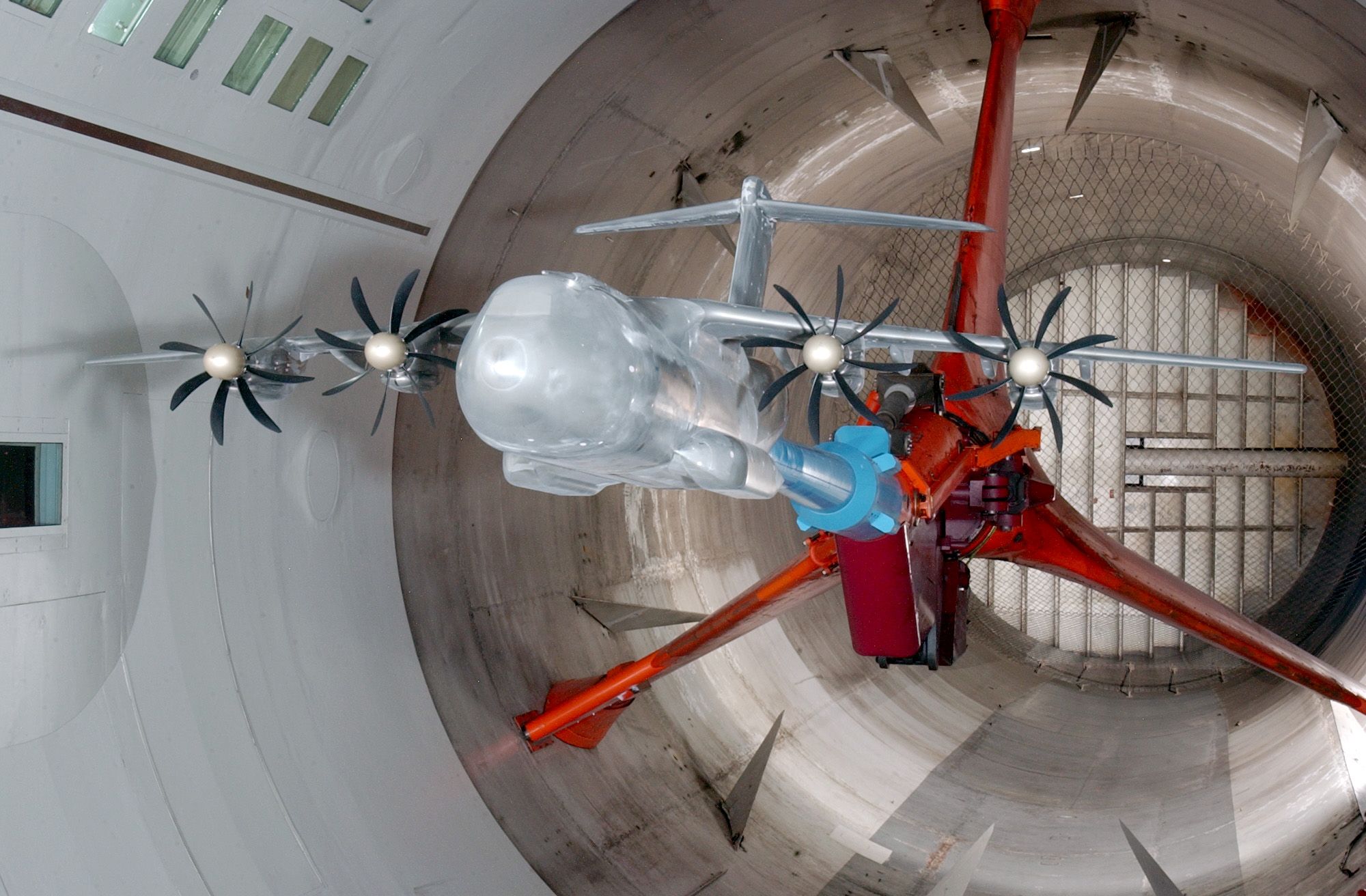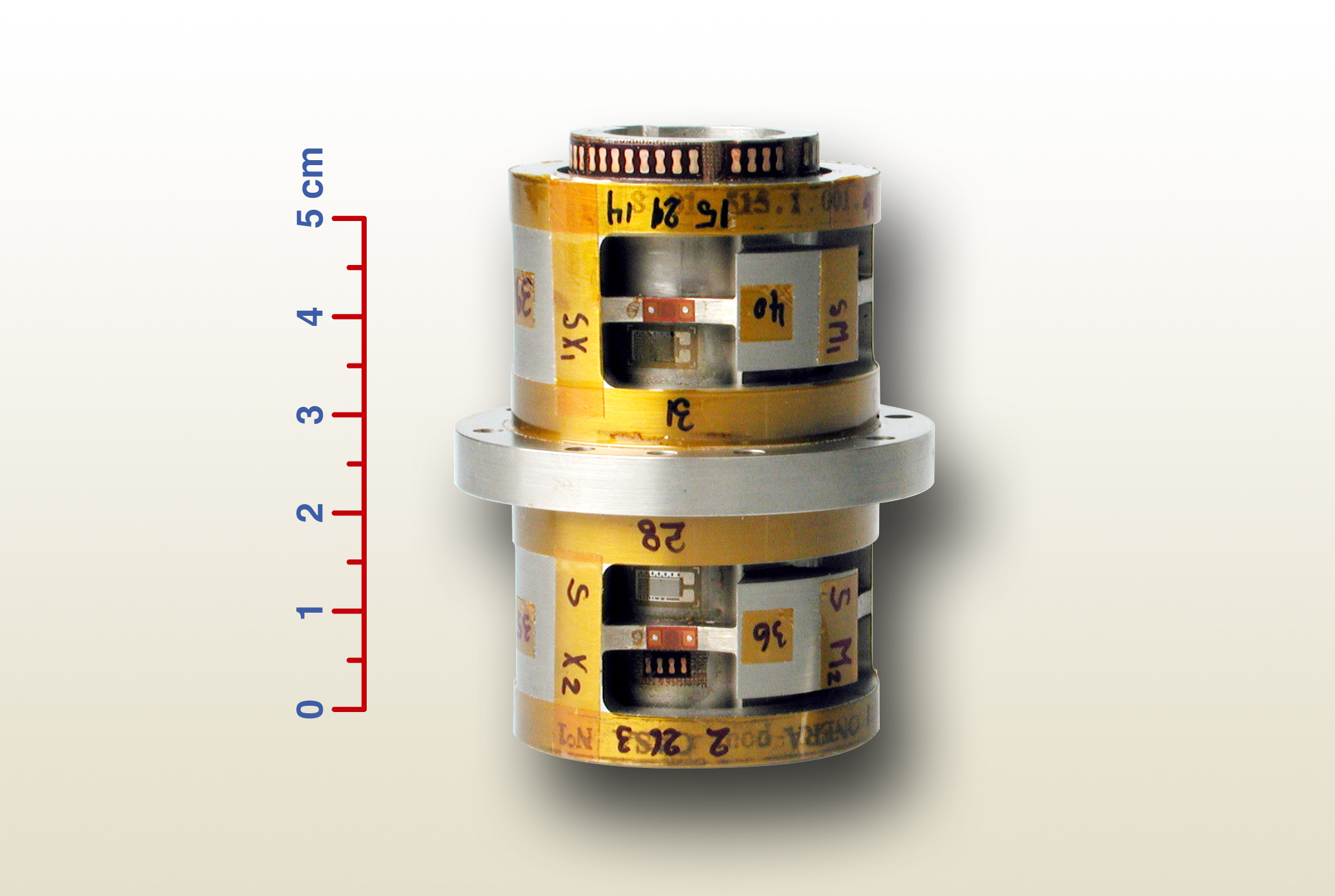- ONERA
- Wind Tunnels
- Testing techniques
- Propulsion Simulation
Propulsion Simulation
Two techniques are described here-after:
- The simulation in the case of turbojet propulsion
- The simulation in the case of propeller propulsion
Turbine Power Simulation (TPS)
ONERA has worked with TPS technology for over 25 years, spanning many engine integration test campaigns. All our industrial wind tunnels provide the necessary dry environment for successful TPS tests.
Several TPS have been tested for high bypass ratio engines involving civil airliner tests: from 4 inch TPS, power 60 kW, in S2MA up to 9 inch TPS, power 300 kW, for large scale model tests in S1MA and F1.
ONERA has its own in-house TPS calibration facility, called the S4B vacuum tank. This facility allows model engine calibration without external flow, at wind tunnel test conditions, both in normal and reverse flow modes of operation (a feature unique to the S4B vacuum tank). The measurement uncertainty is order +/-0.1% in flow coefficient, and +/-0.15% in thrust coefficient.
Engine simulators available within ONERA
ONERA and DNW share together 2 common TPS for the low-speed and high speed domain, with a high by pass ratio, 7.8 inches simulator.
The objective of the TPS is to simulate fanjet engine for uses on wind tunnel models of transport aircraft.
Main characteristics
The 7.8" single stage fan is driven by a three stage turbine. The turbine (in place of the gas generator) is driven by externally compressed air. Rotation is clockwise aft looking forward. Bearing lubrication is provided by a close loop system located outside the wind tunnel.
The simulator is designed for a fan pressure ratio of 1.48 and a fan airflow of 4.98 kg/s at a design speed of 37.500 corrected RPM. Fan nozzle area at this condition is 164 cm2.
The turbine develops 196 kW at fan design point requiring 1.57 kg/s of drive air at 290 K and 16.4 bars total pressure measured at the pylon interface (sea level conditions).
The global length is 350 mm and the external diameter is 217 mm.
General mounts and simulation techniques using TPS
Propeller propulsion simulation
ONERA Wind Tunnel Division has a know-how concerning the propeller propulsion whose numerous developments have been done on the occasion of the A400M European military transport plan programme.
ONERA possesses some pneumatical motors able to ensure the propeller movement, as well as the turning balances allowing measuring the instant strain effort matrix on the propeller.
The supply of the pneumatical motors in compressed air also requires the mountings allowing to convey the air (there and back), some slipped systems allowing the air flow by minimising the interactions with the main balance and some miniature valve systems able to be integrated in the mode at the nearest of the motors.
Tests on complete or half models of two or four engine aircrafts have been carried out in the S1MA et F1 wind tunnels






